Top Of The Table Games In 30 Minutes (Or Less)
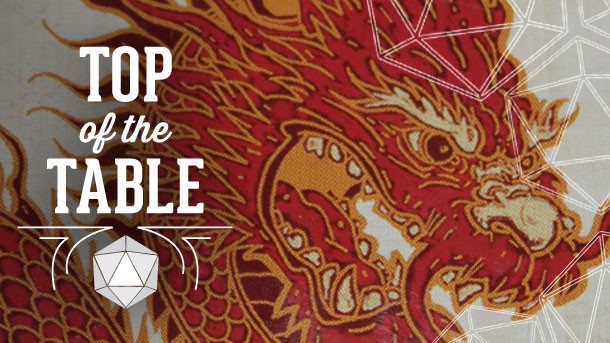
Among longtime tabletop hobbyists, the tendency is often toward tackling deeply complicated games that extend their playtimes over many hours. Those involved play sessions can be rewarding, but sometimes you’re in the mood for something lighter. Maybe you’re a veteran gaming group looking for a “warm-up” title before diving into one of those other longer games. Or perhaps you and your friends or family are just dipping your toes into board and card games for the first time, and you don’t want to be overwhelmed or lose the attention span of younger or inexperienced players. Either way, you don’t need to settle for a subpar game night. Here are ten awesome tabletop games that can be played in under 30 minutes.
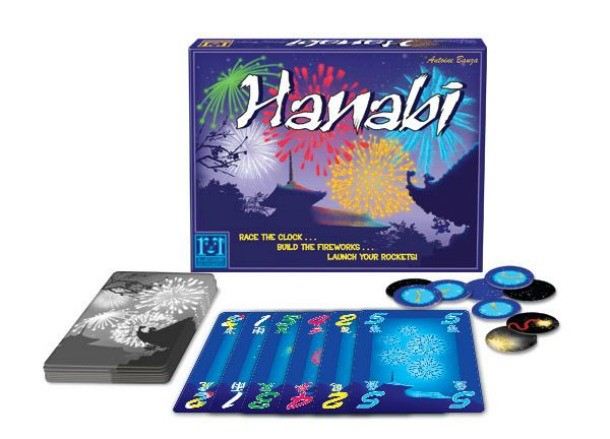
Hanabi
Publisher: R&R Games
Designer: Antoine Bauza
You are an inept firework manufacturer, and you forgot to plan the evening’s all-important fireworks display. You’re going to have to wing it! The amusing setup for this cooperative card game hides a sophisticated guessing game in which all players work together to try and win. Each player holds a hand of cards, but he or she holds them backwards – only the other players know what you have in hand, replicating the idea that your team is working together in the dark to arrange the fireworks. Using specific clues about the color and number of particular cards, each player must play the next card in a sequence without knowing for sure it’s the right “firework” in the sequence. Hanabi plays fast, and the clue-giving system demands critical thinking and careful memorization. Whether played with complete beginners or long-established gamers, I’ve yet to find a gaming group that doesn’t fall in love with this one after just the first game.
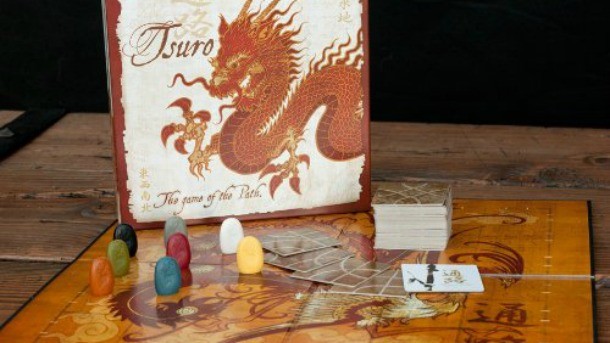
Tsuro
Publisher: Calliope Games
Designer: Tom McMurchie
Even after being around for over a decade, Tsuro sees regular play in my gaming circles, thanks to its ease of play, beautiful Asian-inspired art style, and endless variation. Each player guides their dragon along the wind currents represented by tiles of twisting and intersecting lines, attempting to stay aloft while driving opposing players off the board. Dragon playing pieces are forced to follow the line they’re on, even if its inevitable conclusion leads them to failure. Tile placement creates a fascinating and increasingly complex web of traps, twists, and circuitous flight patterns, but the grid is small enough that games wrap up in minutes, and it’s back for a second run.
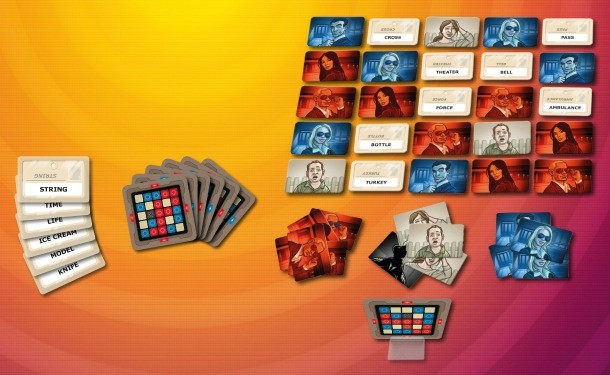
Codenames
Publisher: Czech Games Edition
Designer: Vlaada Chvátil
Two opposing teams of spies are trying to find their agents in the field, but they only know each agent’s codename. Which team can find their agents first, but without accidentally coming in contact with the assassin? Codenames is a game about words, meanings, and understanding the way your fellow players think. In each game, two players are designated opposing spymasters, and they give one-word clues to their teammates that connect to one or more cards laid out on a grid, each of which has a codename on it. Only the spymasters know which codenames connect to the correct field agents. Spymasters must think carefully not just about what correct cards might be selected from their clue, but also which incorrect cards might be misconstrued through the clue, ending the turn and aiding the opposing team. Codenames happily supports varying group sizes as players come in and out of rounds. My experience? New players drop in to try their hand at guessing, and end up refusing to leave before they get a try at spymaster.

Mafia de Cuba
Publisher: Asmodee
Designer: Philippe des Pallières, Loïc Lamy
Like lying to your friends? Boy, do I have a game for you. Mafia de Cuba is a delightful twist on the popular genre of bluffing games. The game box doubles as a Mafioso’s cigar box, and it’s filled with diamonds. The box also holds character tokens for particular roles like loyal henchmen and infiltrating FBI agents. The box gets passed around the table, and players must either take some of the diamonds, or adopt one of the character roles still in the box. The godfather player then relentlessly interrogates everyone else at the table, trying to ferret out the thieves. Mafia de Cuba offers a fascinating mix of potential outcomes as each of the different character roles requires different win conditions, and most of those conditions require alliances, betrayals, and outright deception to reach success.
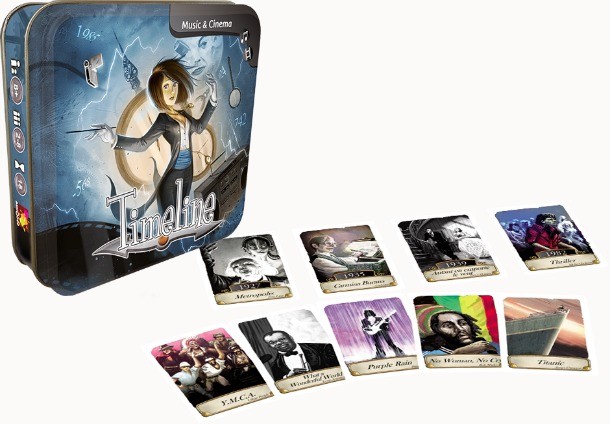
Timeline
Publisher: Asmodee
Designer: Frédéric Henry
Timeline suffers under the often-damning label of being an educational game for kids – a classification that sometimes keeps players at bay. That’s really too bad, because my time with the game suggests this excellent card game can be enjoyed and embraced by all ages. Players take turns trying to get rid of their hand of cards by placing them one by one into an ever-growing timeline of historical events. Do you know if the printing press was created before or after the first video game? That might be easy, but how about knowing whether the death of Elvis Presley is before or after video games? Timeline has a base game, but a huge number of expansions add more cards on topics like Inventions, American History, or Music & Cinema. I’ve seen even studied history buffs stumble from time to time as the timeline grows ever more complicated, and Timeline has a way of opening up great conversations as people realize just how wrong they were about the grand scope of the past.
Next Page: Travel to feudal Japan, or become a boss monster at the end of a video game dungeon.
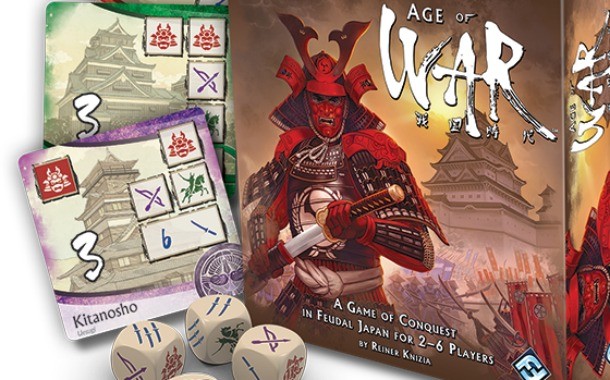
Age of War
Publisher: Fantasy Flight Games
Designer: Reiner Knizia
One of the most treasured and certainly oldest genres of tabletop play is the war game, and modern gamers have a plethora of amazing options to simulate large scale conflict. But few do so with such a quick setup and easy-to-understand rules. Knizia’s Age of War does an admirable job, mixing the fun of dice-rolling with strategic choices about where to deploy troops through an ongoing war in feudal Japan. Players take turns rolling a pool of dice, and the results represent infantry, cavalry, and other troops that are required to conquer certain castles. Choosing when to reroll, what castles to attempt for a takeover, and whether you try to unite an entire clan under your banner are all choices before you. Castles change hands, fates are decided, and Japan falls under the rule of a new shogun before half an hour has passed.
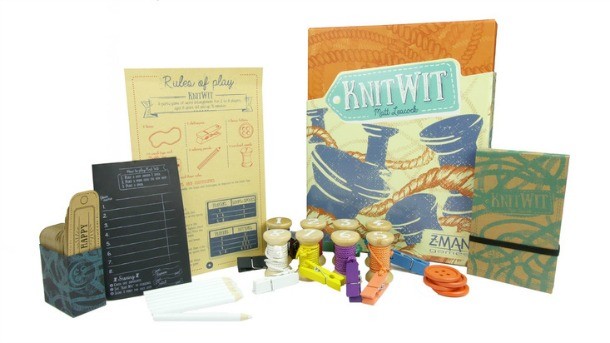
Knit Wit
Publisher: Z-Man Games
Designer: Matt Leacock
The prolific designer behind such hits as Forbidden Island and Pandemic recently brought us this lighter party game, and it’s great fun for players who like word association and social play. Much of Knitwit’s charm lies in its unique components, including yarn spools, clothespins, and buttons, all in place of a traditional board or cards. Players take turns laying out words pinned to a string loop encircling an ever-growing number of spools on the table. After all the spools are placed, players furiously write down words that tie together all the concepts connected to particular spools, and then reveal their answers. If someone challenges the answer by shouting “Knit Wit!,” the whole group can vote on whether the answer appropriately encompasses all the words connected to that spool. The unusual and seemingly homespun components and focus on words and ideas has strong potential to draw in players who might otherwise scoff at the thought of a board game night.
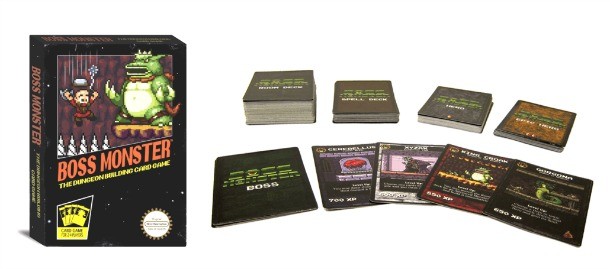
Boss Monster
Publisher: Brotherwise Games
Designer: Chris O’Neal, Johnny O’Neal
Old-school video game enthusiasts should particularly gravitate to this one, but just about anyone can get the gist of Boss Monster. You are the villainous and monstrous boss waiting at the end of a side-scrolling dungeon of traps and minions. Foolish gaming heroes line up outside, and rush towards the dungeon of the player who has the best loot for their character class, only to be beaten down and destroyed by the devious and hellish rooms through which they must pass. Boss Monster uses cards to represent your ever-growing dungeon and the heroes that vainly fling themselves into the gauntlet, and each boss monster even has special abilities that help shape the outcome. The game includes plenty of nods to classic video gaming, but it’s the fascinating strategies for becoming the best conniving villain that keep the game playable time and again.
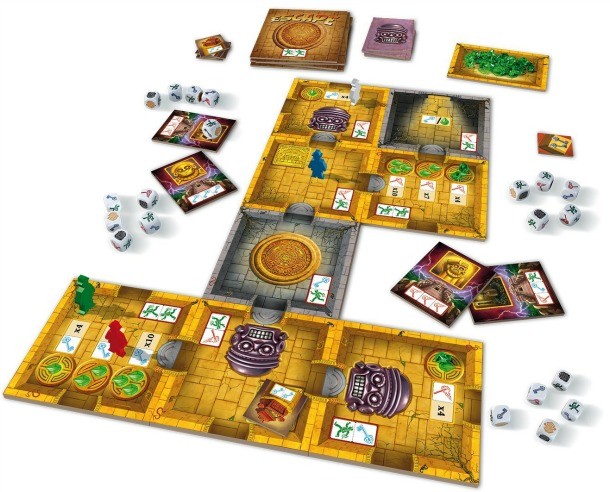
Escape: The Curse of the Temple
Publisher: Queen Games
Designer: Kristian Amundsen Østby
Looking for something a little more active and frantic? Escape: The Curse of the Temple is an addictive and often hilarious game played in real time. A ten-minute soundtrack plays in the background as all the players begin play inside a deadly temple, and they then work together to find a way out. Success is determined as all players roll pools of dice at the same time, desperately trying to get the dice rolls they need to open the next door. The soundtrack ticks away and gets more ominous as death nears, and players end up shouting over one another for help opening particular pathways, and the clatter of dice rolling is constant. Simple, mildly strategic, and frequently a little silly, the fun of Escape is infectious.
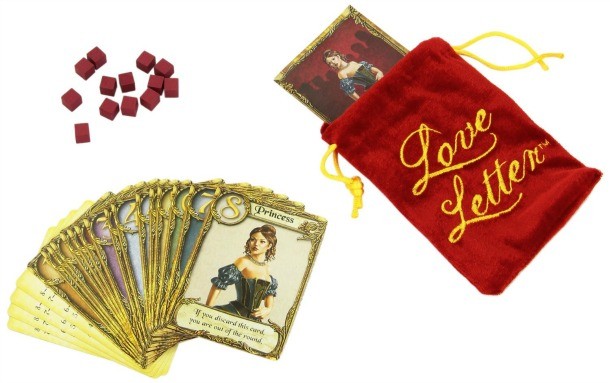
Love Letter
Publisher: Alderac Entertainment Group
Designer: Seiji Kanai
Love Letter is a seemingly simple game with a surprising mix of deduction, subtle storytelling, and risk management. Each player is a suitor hoping to gain the attention of the beautiful princess by sending along an amorous note. Whichever suitor sees their letter delivered from the Princess’ most loyal companion wins the round, and eventually woos the future sovereign. Along the way, players use cards in their hand to manipulate other suitors’ efforts, deploying tactics like making other players trade hands by the King’s command, or gaining protection from other suitors by playing the Handmaid. Players inevitably end up concocting fun side stories about what royal intrigue is unfolding, like just exactly what was the princess’ best friend the Countess doing in the same hand with young Prince Arnaud? Love Letter’s clever premise and breezy gameplay make for an excellent introduction to the ways even simple, accessible games invite strategy and planning.
What short games do you play with your gaming group? Share your favorites in the comments below, and as always, contact me by email or Twitter if there’s a particular game or topic you’d like to see featured on Top of the Table.










